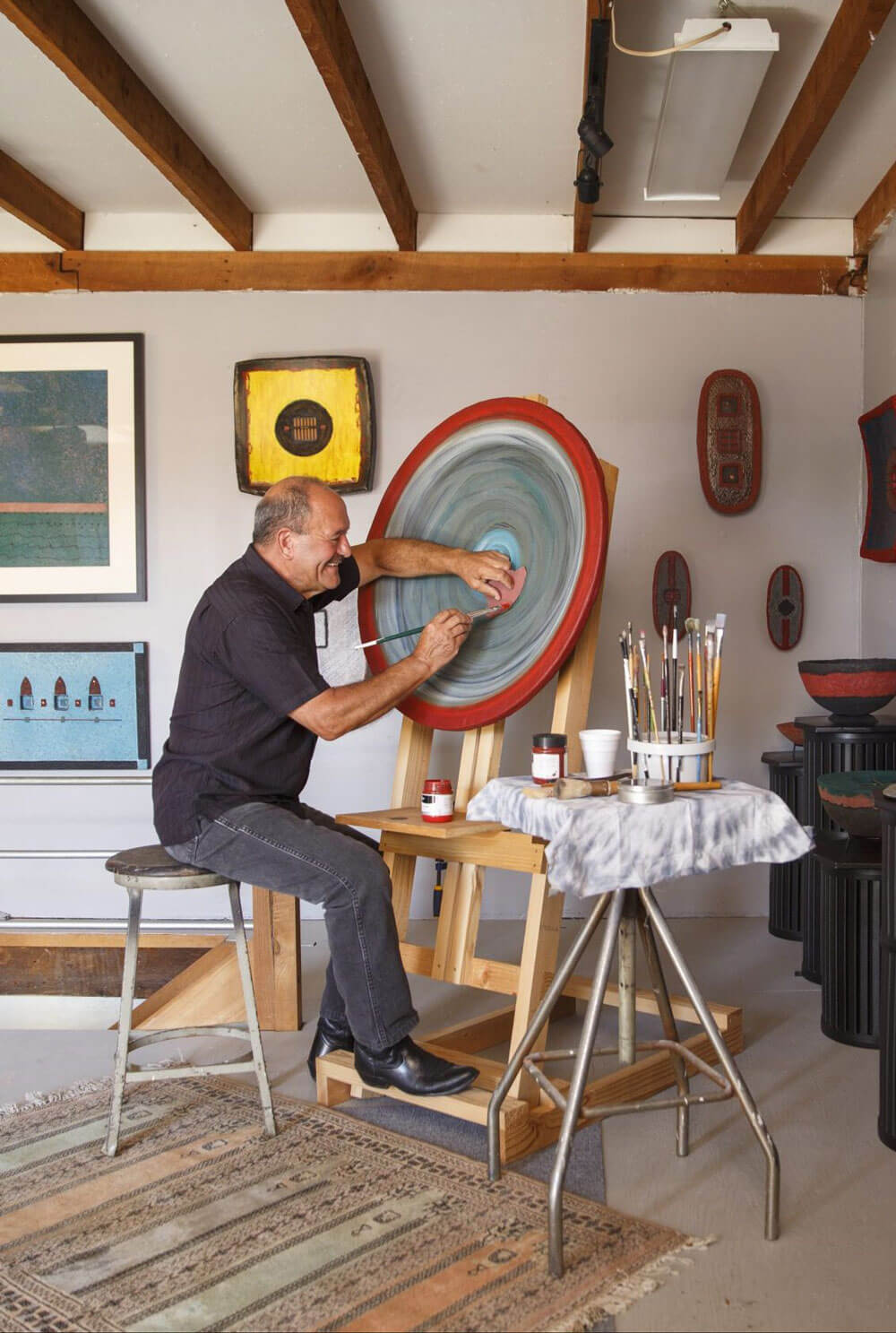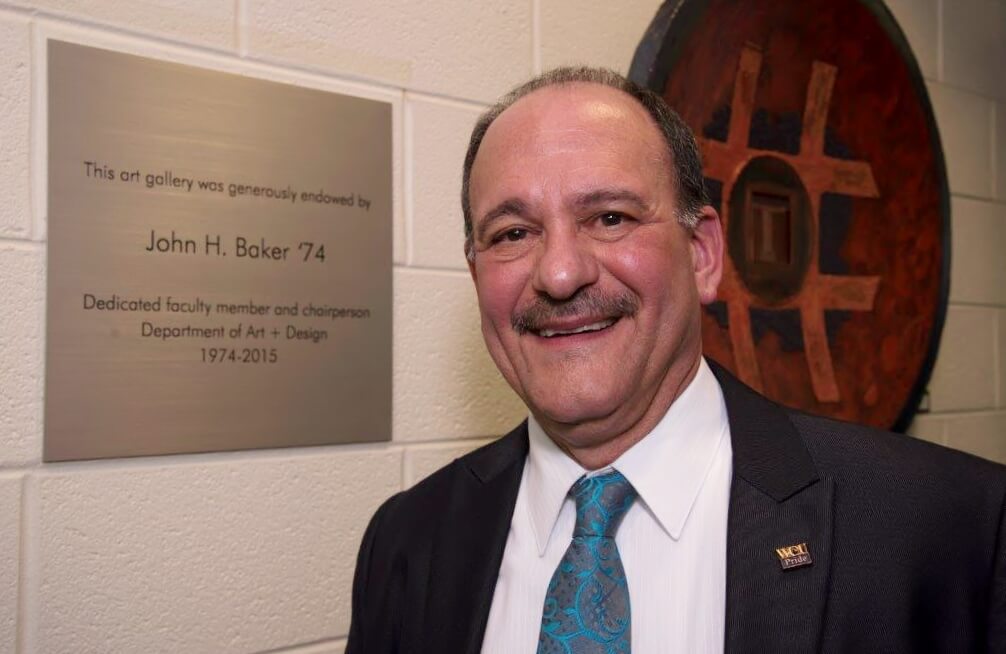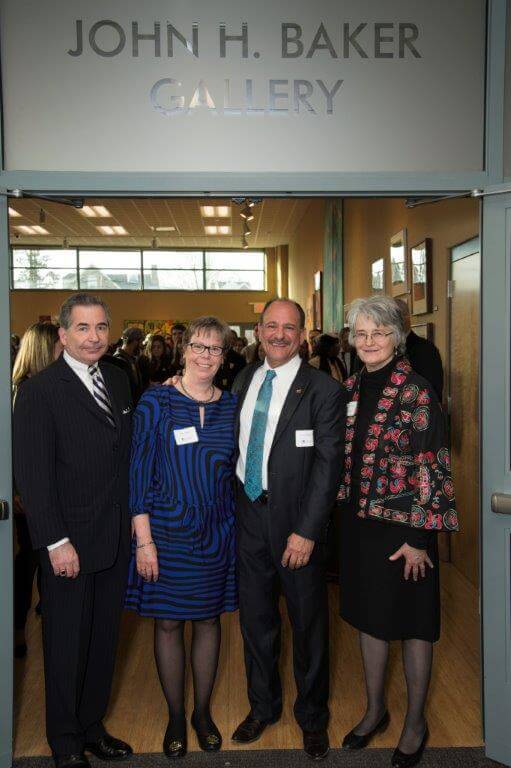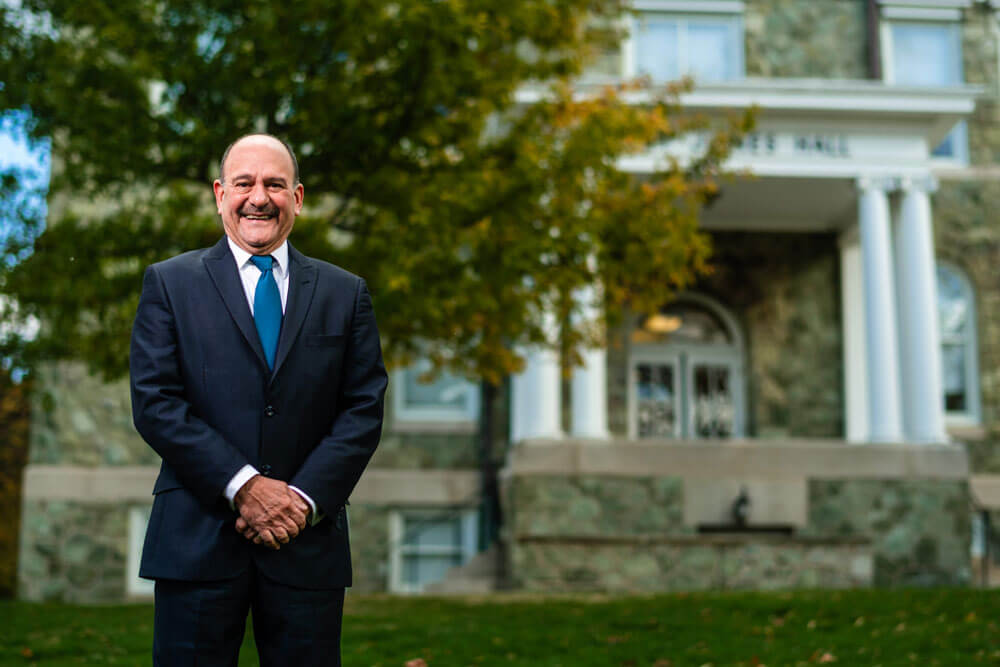Fostering Growth
The University helped him establish his artistic career.
His endowment will attract the talent to continue his legacy.

A lifelong passion
John Baker ’74 originally planned to work at West Chester University for a year — two at most. After earning his bachelor’s degree, he’d accepted a position as a part-time adjunct professor in the University’s ceramics program. John figured it was an opportunity to pay off his student loans.
“Now the loans are paid off — but I never did leave,” says John, who today serves as president of the West Chester University Foundation Board of Trustees. “Other than a few part-time jobs at other universities, WCU has been my sole employer for my entire career.”
Putting in long hours firing kilns, making glazes, and fostering an inclusive, community-focused culture, John worked his way up to become a full-time professor — then chair of the Department of Art + Design. With his oversight, the department gained accreditation from the National Association of Art and Design and made its landmark move to the E. O. Bull Center for the Arts.
Before retiring as department chair in 2015, John chose to endow the center’s gallery with a major gift. The John H. Baker Art Gallery Endowment fund provides financial support for international and local exhibitions, providing a common ground for visiting artists, students, and the public alike. “Curating exhibitions has always been a passion for me,” John says. “Endowing the gallery is my way of giving back to the department and University.”
John Baker ’74
Donor to the John H. Baker Art Gallery
President of the West Chester University Foundation Board of Trustees Former chair of WCU’s Department of Art + Design
“A lot of our students aren’t in financial positions where they have as many opportunities to travel and gain experience. For me, there was no question that I would give back based on the opportunities that were given to me during my time here.” — John Baker
“I’ve had over 40 outstanding years here,” John says. “When you have that depth of experience and time with the institution, there’s no question about wanting to give back — and feeling good about that.”
A personal approach
While spending time at other universities nationally and abroad, John says he noticed WCU’s art department stands out for its close connection between faculty and students. “Compared to other institutions, we have a much more hands-on approach where our faculty are very accessible,” John says. “Our professors are very active in a number of student organizations and clubs, spending time with students outside of class. That’s also true for other departments across campus. I think that’s really unique in higher education.”
Much of that collaboration also takes place in the form of research projects — or in John’s case, murals and installations, both on and off campus. “We bring students into the mix so they have experience working in the community, and also understand the business and professional aspects of the job. It really takes that learning experience to a whole other level.”
In particular, John made a point to include students and studio faculty in trips overseas. “Whenever I had an invitation abroad, I would always say that I’d like to include all my studio faculty in the exhibition — so they could have an international exhibition on their resumes,” John says. “When teaching, I’d often take students on trips with me to experience different cultures and environments. Many students haven’t gotten to go overseas — but for me, travel has been life-changing.”
A position to give
While John is no longer as actively involved with the gallery, he still helps organize the occasional exhibition and attends as many openings as possible. By stepping away, his goal is to give faculty and students the opportunity to step up in finding relevant artists.
By bringing in new talent, John’s hope is that the gallery — and the University itself — will foster new friendships and connections. With that support, students can continue to benefit from the University’s growing system of graduate-level programs and cutting-edge facilities, taking advantage of the same kinds of opportunities John leveraged himself.
“I’ve had over 40 outstanding years here,” John says. “When you have that depth of experience and time with the institution, there’s no question about wanting to give back — and feeling good about that.”
John continues, “If our faculty could help support scholarships or any educational development type programs, a little bit of giving can go a long way. It’s not so much the amount, but it’s about the commitment of many.”


